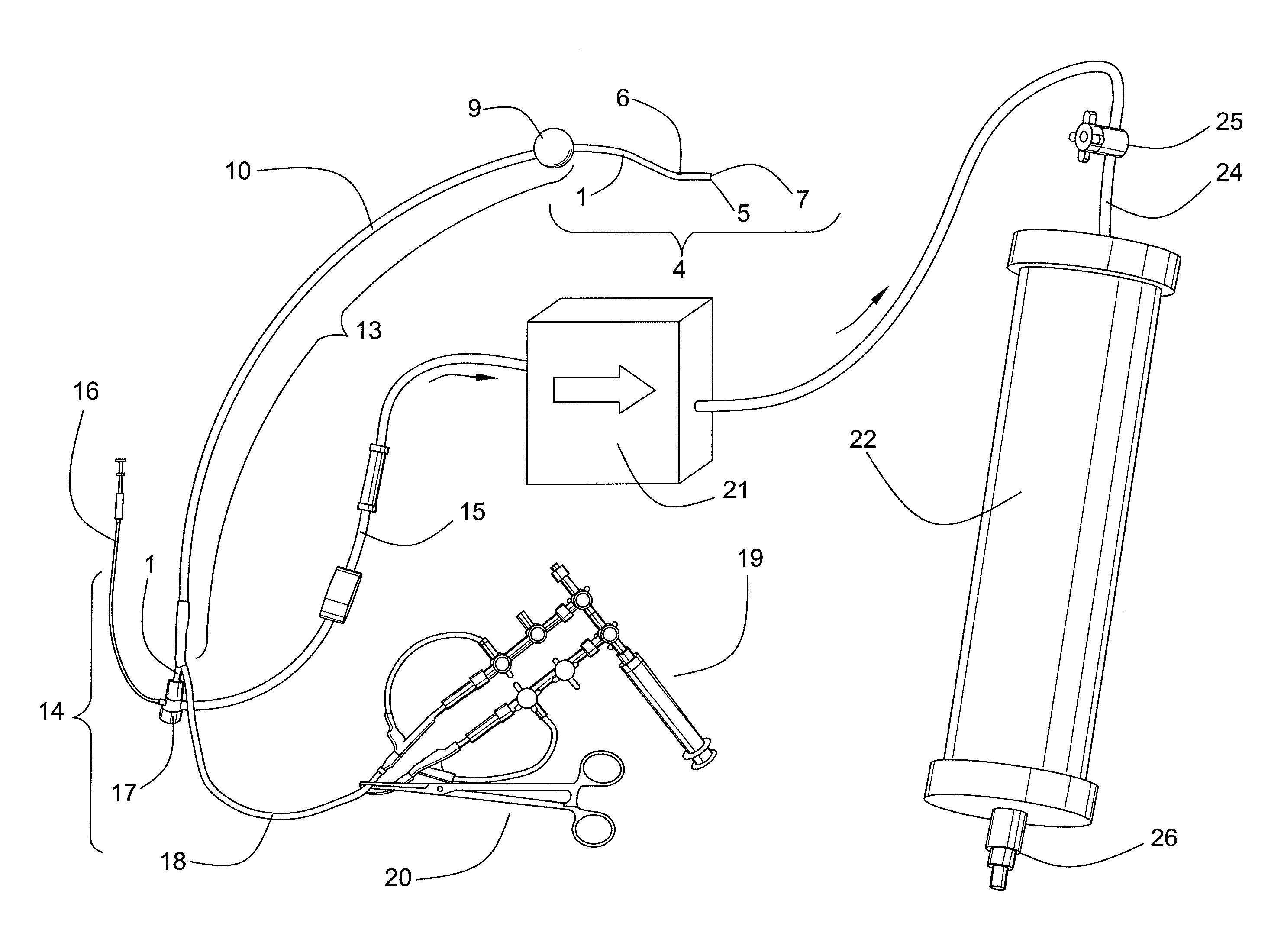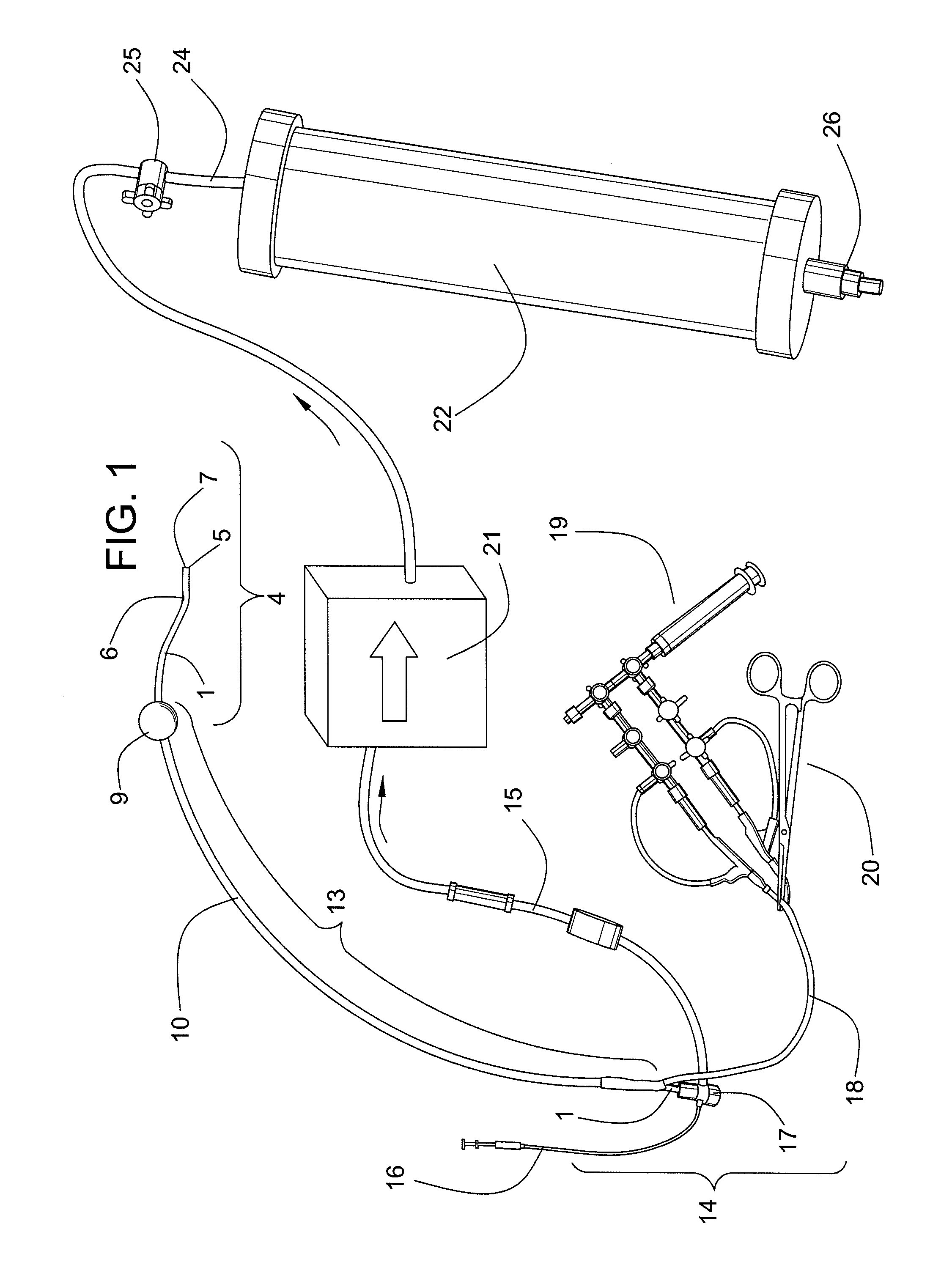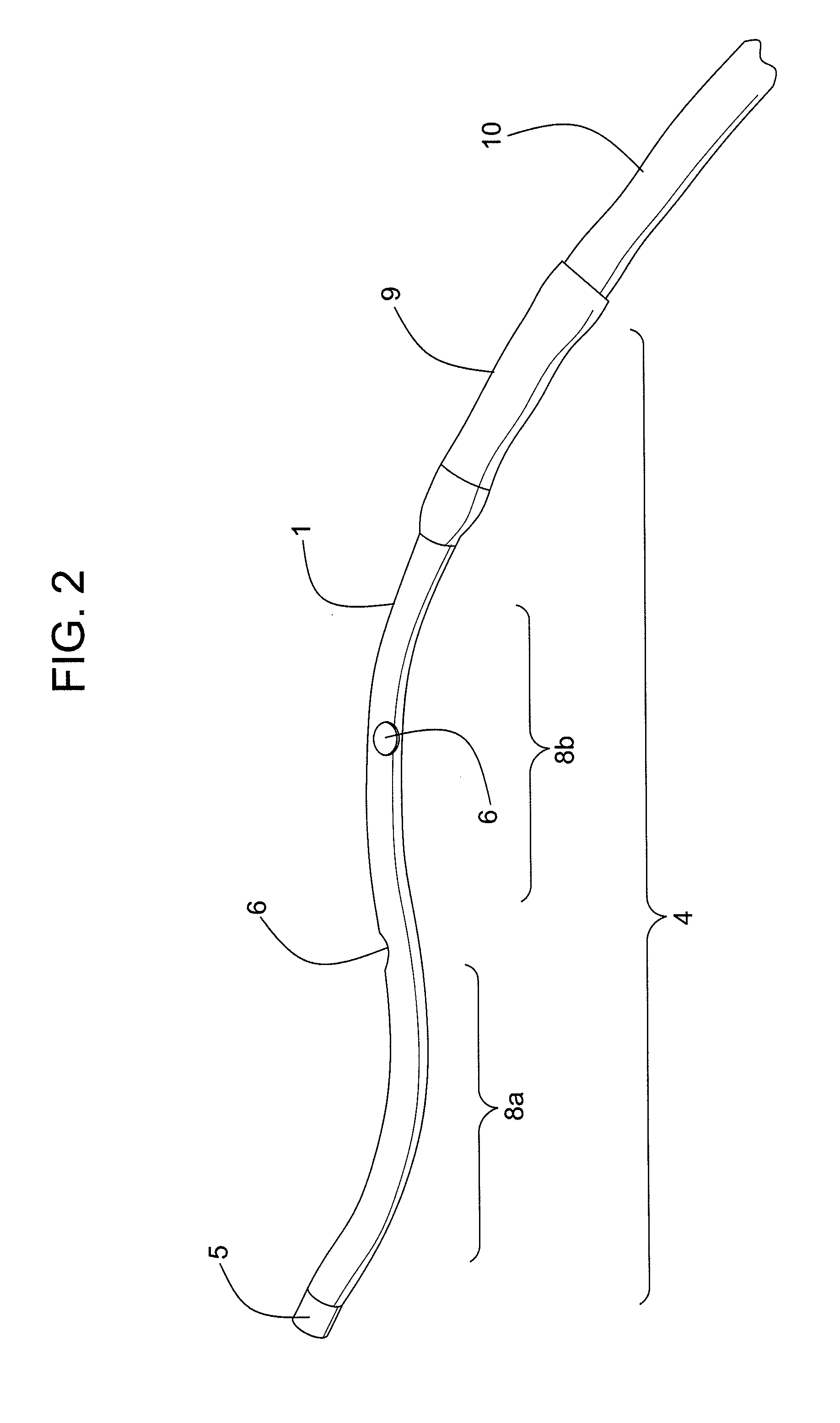Removal of contrast agents from blood
a contrast agent and blood technology, applied in the field of medical diagnostic imaging, can solve the problems of no viable alternative, agents still carry a risk of renal injury, and no adjunctive medical or mechanical treatment has been proven to be effective in reducing the risk of cin
- Summary
- Abstract
- Description
- Claims
- Application Information
AI Technical Summary
Problems solved by technology
Method used
Image
Examples
example 1
[0045]This example demonstrates the use of a sorbent for removing contrast from blood. This example further illustrates the invention but, of course, should not be construed as in any way limiting its scope.
[0046]A cartridge containing 500 gm CytoSorb beads (MedaSorb Technologies, Princeton N.J.) is flushed with saline. 900 ml of blood was reconstituted from 675 ml of packed red blood cells and 225 ml of normal saline. 45 ml of iodixanol (Visipaque, GE), containing a total of 14400 mg of iodine (320 mg / ml) is mixed with the 900 ml of blood. 600 ml of the blood and contrast mixture is separated in 12 samples of 50 ml each. 6 samples is passed through a device at a rate of 60 ml / min. Another 6 samples were left untreated as controls. Plasma is separated in all 12 specimens, and then subjected to X-ray fluorescence spectrometry for iodine concentration measurement. The resulting concentrations with changes and percent changes are provided in table 1 below. Greater than 99.8% of the con...
PUM
 Login to View More
Login to View More Abstract
Description
Claims
Application Information
 Login to View More
Login to View More - R&D
- Intellectual Property
- Life Sciences
- Materials
- Tech Scout
- Unparalleled Data Quality
- Higher Quality Content
- 60% Fewer Hallucinations
Browse by: Latest US Patents, China's latest patents, Technical Efficacy Thesaurus, Application Domain, Technology Topic, Popular Technical Reports.
© 2025 PatSnap. All rights reserved.Legal|Privacy policy|Modern Slavery Act Transparency Statement|Sitemap|About US| Contact US: help@patsnap.com



